Ali Zindari
Decoupled SGDA for Games with Intermittent Strategy Communication
Jan 24, 2025Abstract:We focus on reducing communication overhead in multiplayer games, where frequently exchanging strategies between players is not feasible and players have noisy or outdated strategies of the other players. We introduce Decoupled SGDA, a novel adaptation of Stochastic Gradient Descent Ascent (SGDA). In this approach, players independently update their strategies based on outdated opponent strategies, with periodic synchronization to align strategies. For Strongly-Convex-Strongly-Concave (SCSC) games, we demonstrate that Decoupled SGDA achieves near-optimal communication complexity comparable to the best-known GDA rates. For weakly coupled games where the interaction between players is lower relative to the non-interactive part of the game, Decoupled SGDA significantly reduces communication costs compared to standard SGDA. Our findings extend to multi-player games. To provide insights into the effect of communication frequency and convergence, we extensively study the convergence of Decoupled SGDA for quadratic minimax problems. Lastly, in settings where the noise over the players is imbalanced, Decoupled SGDA significantly outperforms federated minimax methods.
The Limits and Potentials of Local SGD for Distributed Heterogeneous Learning with Intermittent Communication
May 19, 2024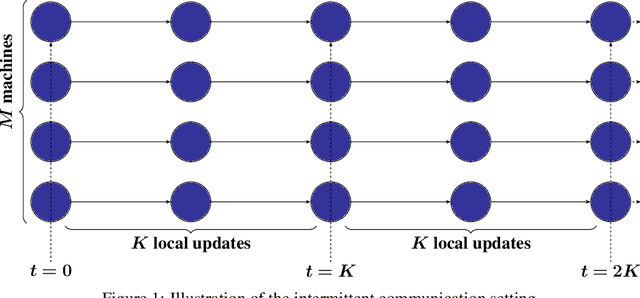
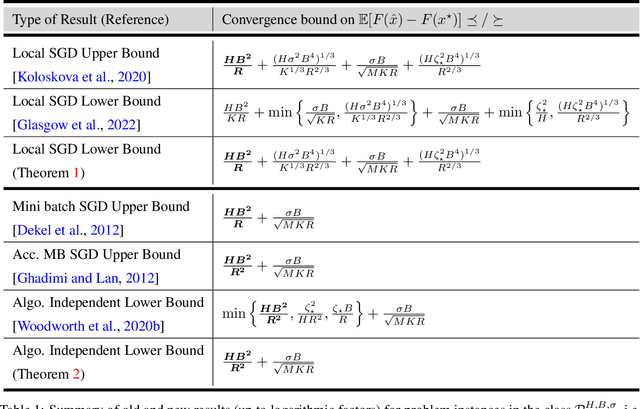
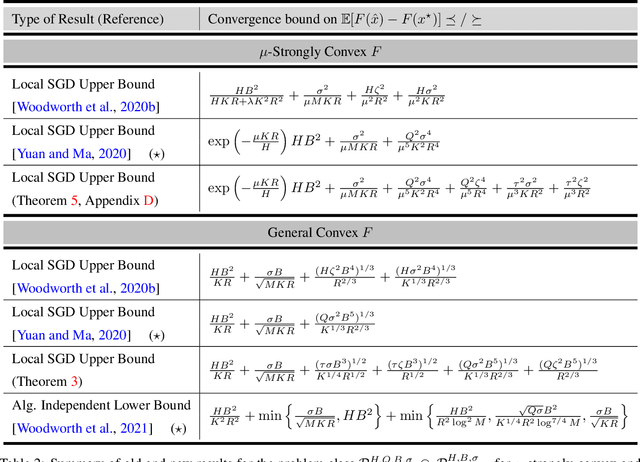
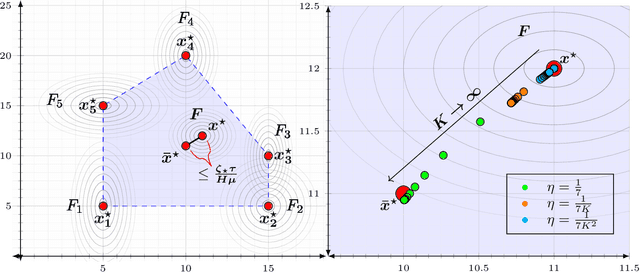
Abstract:Local SGD is a popular optimization method in distributed learning, often outperforming other algorithms in practice, including mini-batch SGD. Despite this success, theoretically proving the dominance of local SGD in settings with reasonable data heterogeneity has been difficult, creating a significant gap between theory and practice. In this paper, we provide new lower bounds for local SGD under existing first-order data heterogeneity assumptions, showing that these assumptions are insufficient to prove the effectiveness of local update steps. Furthermore, under these same assumptions, we demonstrate the min-max optimality of accelerated mini-batch SGD, which fully resolves our understanding of distributed optimization for several problem classes. Our results emphasize the need for better models of data heterogeneity to understand the effectiveness of local SGD in practice. Towards this end, we consider higher-order smoothness and heterogeneity assumptions, providing new upper bounds that imply the dominance of local SGD over mini-batch SGD when data heterogeneity is low.
Segmentation of Lungs COVID Infected Regions by Attention Mechanism and Synthetic Data
Aug 25, 2021
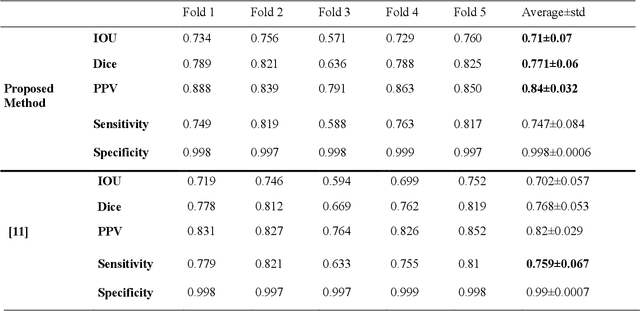


Abstract:Coronavirus has caused hundreds of thousands of deaths. Fatalities could decrease if every patient could get suitable treatment by the healthcare system. Machine learning, especially computer vision methods based on deep learning, can help healthcare professionals diagnose and treat COVID-19 infected cases more efficiently. Hence, infected patients can get better service from the healthcare system and decrease the number of deaths caused by the coronavirus. This research proposes a method for segmenting infected lung regions in a CT image. For this purpose, a convolutional neural network with an attention mechanism is used to detect infected areas with complex patterns. Attention blocks improve the segmentation accuracy by focusing on informative parts of the image. Furthermore, a generative adversarial network generates synthetic images for data augmentation and expansion of small available datasets. Experimental results show the superiority of the proposed method compared to some existing procedures.
 Add to Chrome
Add to Chrome Add to Firefox
Add to Firefox Add to Edge
Add to Edge